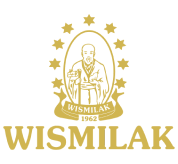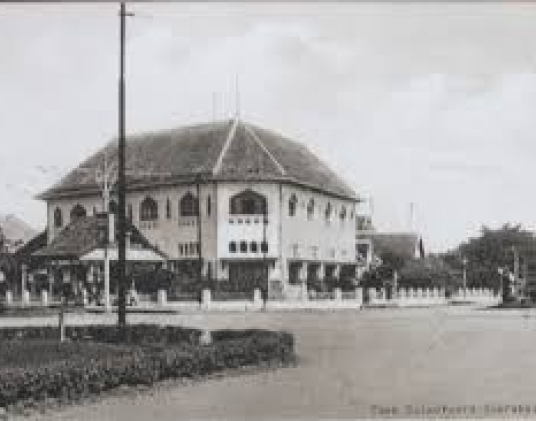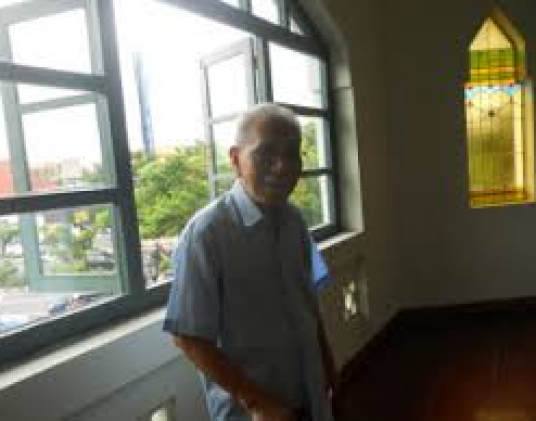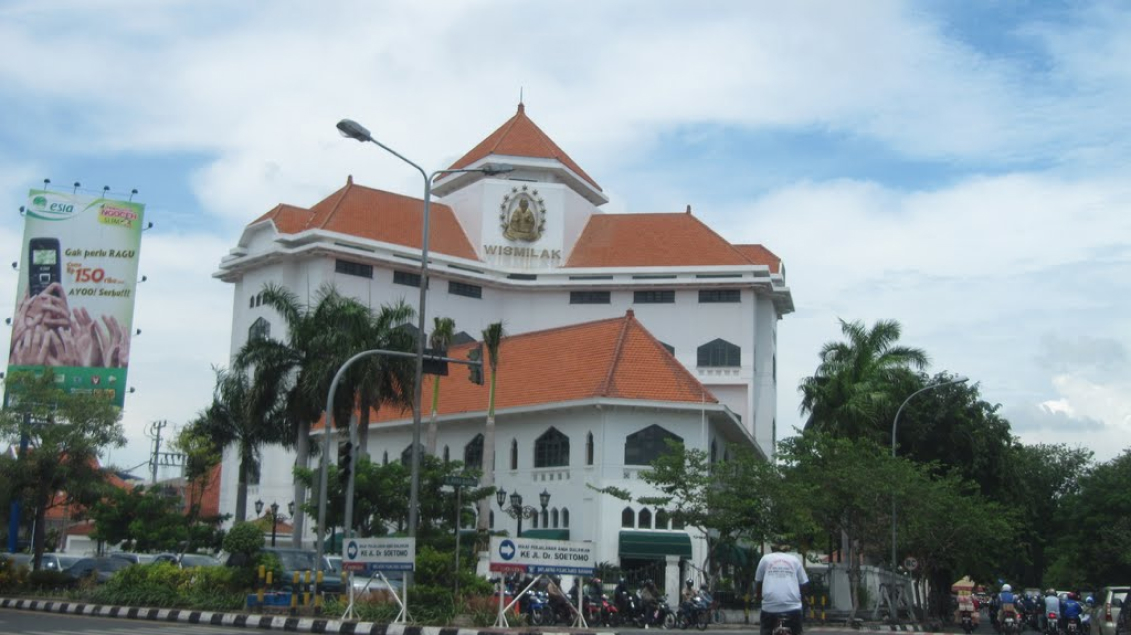Grha Wismilak berdiri di pojok jalan Raya Darmo 36 dan Jl. Dr. Soetomo 27 Surabaya. Sampai saat ini belum diketahui sang arsitekturnya. Namun diperkirakan dibangun sekitar tahun 1920.

Grha Wismilak berdiri di pojok jalan Raya Darmo 36 dan Jl. Dr. Soetomo 27 Surabaya. Sampai saat ini belum diketahui sang arsitekturnya. Namun diperkirakan dibangun sekitar tahun 1920.

Grha Wismilak berdiri di pojok jalan Raya Darmo 36 dan Jl. Dr. Soetomo 27 Surabayaa. Sampai saat ini belum diketahui sang arsitekturnya. Namun diperkirakan dibangun sekitar tahun 1920. Itu tampak dari foto dari kartu pos terbitan Jong Soe Hien. Gedung tersebut di pojok perempatan Darmo Boleuvaard dan Coen Boulevaard. Nama Coen diambil dari Jan Pieterszoon Coen Gubernur-Jenderal Hindia-Belanda yang keempat dan keenam. Pada masa jabatan pertama ia memerintah antara tahun 1619 – 1623, masa jabatan yang kedua berlangsung antara tahun 1627 – 1629.
Menurut Buku Telepon tahun 1929 yang dilacak Nico Van Horn, Archivaris Royal Netherlands Institute of Southeast Asia and Caribbean Studies dari KITLV (Koninklijk Instituut voor Taal-, Land- en Volkenkunde) Leiden, Negeri Belanda , Coen Boulevard 27 (sekarang Jl. Dr. Soetomo 27 Surabaya) dimiliki oleh Paul Alexander Johannes WILHELM BRANDENBURG VAN DER GRONDEN. Ia adalah seorang makelar gula firma G.L. SIRKS & Co.
Sementara itu, Darmo Boulevard 36 (sekarang Jl. Raya Darmo 36) dimiliki oleh WILLEM HUGO LODEWIJK SAVELKOUL. Savelkoul adalah pemilik dan kepala firma Savelkoul. Keluarga tersebut memiliki beberapa toko pakaian pria (termahal) di kota Amsterdam dan Batavia.
Grha Wismilak merasa beruntung, karena salah satu pelaku sejarah gedung ini masih ada. Ia adalah Pak Oei Hian Hwa. Memang saat ini beliau tidak muda lagi, dan sudah berusia 96 tahun. Tetapi semangat dan daya ingatnya tidak pudar. Dengan digandeng cucu dan kadang tongkat, beliau menyusuri tangga demi tangga Grha Wismilak penuh semangat untuk bercerita tentang gedung ini.

Saat itu, 1936, Pak Oei Hian Hwa berusia 22 tahun. Menurutnya Grha Wismilak dahulu adalah Toko Yan, cabang dari Toko Piet (kemudian menjadi Toko Metro) di jalan Tunjungan. “Gedung ini dulu yang ada di loteng 26 orang, sebab dibuat mess pegawai toko Piet dan Toko Yan, khusus yang tidak punya rumah tangga, termasuk saya. Di sini ada empat kamar dan di bagian depan dipakai untuk main ‘ping-pong’ sedangkan di bawah untuk toko, sedangkan halaman samping untuk badminton,” terang Pak Oei Hian Hwa. Sebagai pegawai administrasi, sepengetahuannya, Toko Yan menyewa secara bulanan dari seorang bernama Han Sing Kien di Jl. Ngemplak yang saat ini menjadi markas Garnisun Kota Surabaya. Dengan rinci Pak Hian Hwa menjelaskan dengan sebuah peta yang telah dipersiapkan sebelumnya.
Beberapa waktu sebelum Jepang masuk ke Surabaya di tahun 1942, toko Yan ditutup. Barang-barang yang masih ada dibeli secara ‘bon’ oleh bangsa Belanda di sekitar Coen Boulevard (Jl. Dr. Soetomo sekarang). “Sisanya, kata pemilik, boleh diambil oleh pegawai di situ. Sampai sebuah bom dijatuhkan pesawat Jepang di Tegalsari, Tunjungan dan Ngagel. Di situ baru terasa orang, kacaunya bukan main. Listrik trem tidak jalan, taksi ndak ada, tidak ada becak, semua naik sepeda,” kenang Pak Oei Hwa. Kemudian ia pindah ke Bothstraat (sekarang Jl. Wahidin, Surabaya).
Pak Hian Hwa ingat bahwa di depan Toko Yan ada halte trem listrik. “Yang dari arah kebun binatang di seberang jalan, sedangkan dari arah Jl. Urip Sumoharjo sekarang, ada di depan gedung. Sedangkan di ‘boulevard’ tertanam bunga bougenvile.
“Di sekitar gedung, di Jalan Darmo sekarang dulu ada toko sepatu dan laundry milik orang Cina. Lalu ada toko atau rumah kaca Smith. Itu ada dua macam. Kalau malam buat tempat dansa kalau siang toko bunga Martha. Kebiasaan orang Belanda dulu abonemen bunga. Jadi setiap hari ada bunga di meja yang fresh,” kenang Pak Hian Hwa. “Sedangkan bila mau istirahat orang Belanda di tempat yang sekarang rumah sakit Darmo. Dulunya tempat itu bukan rumah sakit,” jelasnya.
Yang menarik adalah adanya lampu jalan dari gas. “Kalau menyalakan, cukup dengan bambu panjang. Jadi sambil naik sepeda, lampu itu di pukul, dan kemudian menyala. Di depan toko di ujung jalan (sekarang pos polisi) ada pom bensin,” katanya sambil tersenyum. Pak Hian Hwa pun sampai di tangga kayu. “Dulu kalau naik turun bisa berkali-kali dalam sehari. Sering-sering dengan sambil berlari, ujarnya mengenang.
Setapak demi setapak ruangan dikenang Pak Oei Hian Hwa. “Di sini adalah kamar saya dulu. Saya tidur di situ. Di belakang kamar ini dulu ada kamar mandi dan toilet jongkok,” katanya sambil menunjuk. “Daun pintu dan jendelanya memang bersirip seperti sekarang. Tapi lantai kayunya kok sudah bersih ya..,” Memang, setelah dipugar lantai kayu di lantai dua dipoles ulang. Pada saat Surabaya jatuh ke tangan Jepang, sejak 1942 gedung tersebut diambil alih dan difungsikan sebagai kantor polisi Jepang. Begitu seterusnya, pada saat pasca kemerdekaan pun, kepolisian Indonesia meneruskannya menjadi kantor.
Pada tanggal 21 Agustus 1945 Polisi Istimewa Surabaya (Tokubetsu Keisasutai) dipimpin komandan Inspektur Polisi Moh. Jasin memproklamirkan diri sebagai Polisi Republik Indonesia. Menurut Ultimatum Jenderal Mansergh Arek-arek Surabaya diharuskan meletakkan senjata-senjata yang dirampas dari Jepang di muka gedung ini.”.
“Bangunan Cagar Budaya sesuai SK Walikota no.188.45/251/402.104/1996 No. Urut 32. Dinas Kebudayaan dan Pariwisata Kota Surabaya Tahun 2008.”
Demikian tertulis di prasasti ruang lobby Grha WISMILAK. Pada umumnya warga Surabaya mengenal Grha Wismilak sebagai bekas kantor polisi. Anggapan tersebut tidak salah. Pasalnya gedung tersebut memang memiliki nilai sejarah tersendiri bagi Kepolisian Negara Republik Indonesia. Bahkan, proklamasi dan eksistensi ‘Polisi Istimewa’ (yang kini menjadi nama jalan di seberang Grha WISMILAK) dilakukan sebelum terbentuknya POLRI.
Yousri Nur Raja Agam MH, seorang pemerhati sejarah dalam tulisannya yang berjudul “Proklamasi Polisi di Surabaya Mendahului Hari Lahir Polri” (www.rajaagam.wordpress.com) menulis bahwa saat pendaratan armada kapal perang Sekutu di Tanjung Perak Surabaya, 25 Oktober 1945, situasi di kota Surabaya semakin mencekam. Selain pemuda yang bergabung dalam PRI (Pemuda Republik Indonesia) dan BKR (Badan Keamanan Rakyat), polisi juga mempunyai peran yang cukup menentukan menjelang dan sesudah Proklamasi Kemerdekaan RI, 17 Agustus 1945. Ketika terjadi insiden bendera, 19 September 1945, polisi bergerak cepat, mereka menyatu dengan massa. Bahkan di Surabaya, selain polisi umum ada pasukan PI (Polisi Istimewa) yang sangat disegani. PI adalah jelmaan dari CSP (Central Special Police). Apalagi saat bulan Agustus 1945 itu, hanya polisi yang masih memegang senjata. Sebab setelah Jepang menyerah tanpa syarat kepada Sekutu, penguasa Jepang di Indonesia membubarkan tentara PETA dan Heiho. Jepang memulangkan para pemuda yang dilatih dalam pasukan PETA (Pembela Tanah Air) dan Heiho dan senjata mereka dilucuti. Karena polisi mempunyai peran yang istimewa dalam masyarakat, maka kondisi itu dimanfaatkan untuk melakukan pemantapan. Dalam buku “Sejarah Kepolisian di Indonesia”, disebutkan: di Surabaya, Komandan Polisi Istimewa Jawa Timur, Inspektur Polisi Kelas I (Iptu) Moehammad Jasin, memproklamasikan kedudukan kepolisian pada tanggal 21 Agustus 1945. Dalam ejaan lama, Proklamasi Polisi itu tertulis:“Oentoek bersatoe dengan rakjat dalam perdjoeangan mempertahankan Proklamasi 17 Agoestoes 1945, dengan ini menjatakan Polisi sebagai Polisi Repoeblik Indonesia”. Di bawahnya, tercantum: Soerabaja, 21 Agoestoes 1945. Atas Nama Seloeroeh Warga Polisi: Moehammad Jasin – Inspektoer Polisi Kelas I. Jadi, di Surabaya, Kepolisian Republik Indonesia lahir mendahului keberadaan polisi secara resmi di Indonesia yang ditetapkan sebagai Hari Bhayangkara, 1 Juli 1946.

Gedung Grha Wismilak mula-mula adalah bangunan bergaya kolonial dua lantai dan diperkirakan dibangun pada tahun 1920an dan merupakan situs cagar budaya yang dilindungi pemerintah kota Surabaya. Gedung tersebut berada di pojok jalan antara Jalan Darmo dan Jalan Dr. Soetomo, Surabaya. Bila diperhatikan dari luar, fasad gedung bercat putih itu seolah hanya satu lantai. Di dindingnya terdapat ornamen jendela seni kaca patri bersegi lima yang cantik.
Lantai pertama gedung terbuat dari batu alam, sedangkan lantai kedua berlantai kayu. Pada jaman itu gedung dua lantai sangat langka. Total luas gedung asli adalah 999,89 meter persegi yang terdiri dari lantai satu seluas 495 meter persegi. Sedangkan lantai dua 504,64 meter persegi.
Menurut Umu Inaratun, Staf Legal yang akrab disapa Mbak Nana, gedung tersebut dipindahtangankan ke Wismilak pada tanggal 3 Juli 1993 dari ahli waris. Dengan demikian kuat dugaan bahwa sebenarnya gedung lama ini adalah milik pribadi, namun kosong beberapa lama sehingga kemudian difungsikan oleh polisi.
Bila dilihat dari depan, pintu utama menghadap ke sudut jalan. Di lantai satu, dari pintu utama, bila berjalan lebih jauh akan ditemukan empat ruangan yang luas. Saat ini keempat ruang tersebut difungsikan sebagai musholla, tempat terima tamu, dan ruang kantor.Untuk menuju lantai dua, ada satu tangga yang terbuat dari kayu dengan pegangan besi. Begitu sampai di atas akan tampak jelas lantai kayu yang sampai saat ini masih terawat baik. Di lantai dua, saat ini ditempati Field Marketing Sub Division, Marketing Service Department dan EDP Department. Yang menarik dari lantai dua adalah adanya selasar, semacam teras, yang dapat dipakai untuk menyaksikan lalu lintas di jalan Darmo maupun jalan Dr. Soetomo.

Gedung baru diresmikan sejak 9 September 2009 oleh Bapak Willy Walla selaku Presdir PT. Wismilak Inti Makmur. Gedung baru ini berlantai empat dengan tambahan lantai atap dan top floor. Lantai satu seluas 533,61 meter persegi, sedangkan lantai dua sampai empat berluas 583,86 meter persegi. Sedangkan luas lantai atap 522,8 meter persegi sementara top floor seluas 137 meter persegi.
Desain arsitektur gedung baru, mengikuti gedung lama. Tidak hanya mengikuti tetapi juga bersambung dengan gedung lama. Sangat harmonis. Gedung baru adalah hasil rancangan Endramukti Design Associates bulan Juli 2003 yang sangat tertib arsitektur. Alhasil orang awam tidak bisa membedakan lagi mana gedung lama dan mana yang baru. Apalagi hal itu ditambah dengan taman yang indah disepanjang pinggir pagar jalan menuju area parkir di lantai basement sebagai pemersatu kedua gedung. Area parkir Grha Wismilak sendiri seluas 837,41 meter persegi, termasuk basement. Yang menarik, area parkir outdoor mirip sebuah panggung luas.
Saat ini gedung empat lantai yang pembangunannya dikerjakan oleh PT. Jatim Mustika Sarana Steel sejak Juli 2003 itu baru difungsikan sebagian. Lantai satu ditempati kantorManagement Members, dan Chief Personal, PGA & HRD Department serta sebuah ruang makan. Sementara lantai dua, ditempati Sales Division dan Marketing Division serta ruang meeting. Lantai tiga dan lantai empat untuk sementara waktu belum difungsikan. Bila eksterior gedung dominan warna putih, tidak demikian dengan interiornya yang didominasi warna hijau muda khas WISMILAK. Warna hijau yang lebih tua tampak pula di kusen pintu dan jendela yang terbuat dari aluminium. Bahkan warna hijau menjadi pilihan batu granit yang membalut lift. Sebuah paduan yang serasi. Apalagi ditambah adanya dua buah relief batu alam. Relief yang tertempel di dinding koridor penghubung bangunan asli dan bangunan baru tersebut menggambarkan musim panen.
Tentu, yang membuat para karyawan Grha Wismilak nyaman adalah adanya lift yang berada di tengah gedung baru. Tidak hanya itu. Kenyamanan para karyawan bertambah karena peran lebih dari 6 orang karyawan cleaning service yang menjaga kebersihan lantai dan closet setiap hari. Maka tidak mengherankan gedung setinggi 35,69 meter itu menjadi kebanggaan seluruh insan WISMILAK dan kota Surabaya. Terbukti, berbagai pameran (lukisan, foto tempo dulu dan batik), talkshow, serta kunjungan tamu lokal dan mancanegara mulai mengalir ke Grha Wismilak. Bahkan Grha Wismilak pernah diajukan Dinas Pariwisata Jawa Timur untuk menjadi salah satu warisan budaya dunia (World Culture Heritage) United Nations Educational Sientific and Cultural Organization (UNESCO) Asia – Pasifik yang berkantor di Bangkok, Thailand, Grha Wismilak diajukan untuk memperoleh UNESCO Asia Pasifik Heritage Award for Culture Heritage Conservation tahun 2011.
